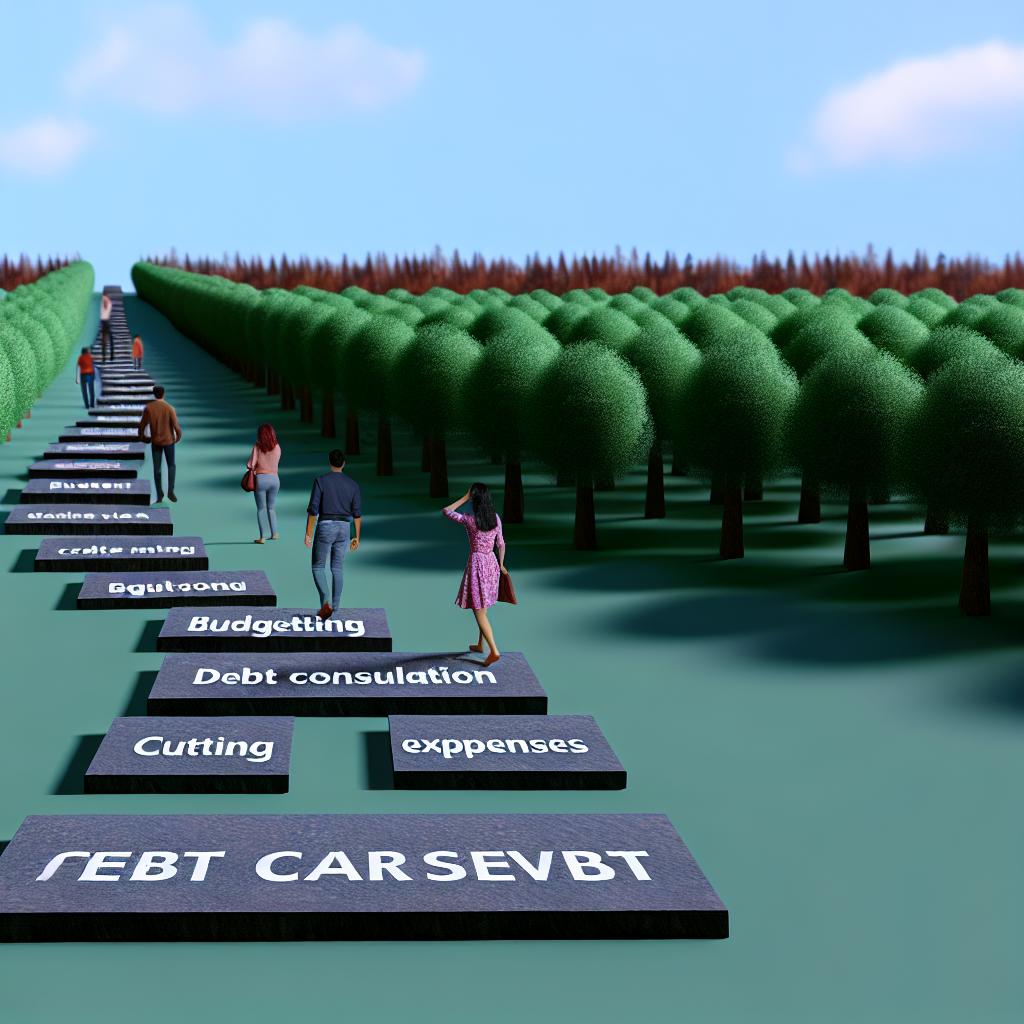Understanding Your Credit Card Debt
Dealing with credit card debt may feel overwhelming, but the first and most important step is understanding your current situation. This involves evaluating your financial circumstances comprehensively. Start by scrutinizing your credit card statements. Doing so will not only provide a clear picture of what you owe but also help you manage your finances better. Identify debts with high-interest rates and categorize them according to their priority in your repayment plan. Proper categorization can help in setting realistic goals and working towards financial stability.
Analyzing Financial Situations
To effectively address credit card debt, it’s crucial to thoroughly assess your present financial situation. Begin by reviewing the total income you generate and all outgoing expenses. This assessment will give you insights into your financial standing and help you identify any unsustainable spending patterns. Once you’ve made a comprehensive analysis, create a budget. Ensure that this budget realistically covers all basic needs such as housing, utilities, and food. After fulfilling these essential requirements, allocate remaining funds towards debt repayment. The key is to foster a balance between necessary expenditures and strategies for tackling debt.
Establishing a Debt Repayment Plan
Creating a structured plan to settle your credit card debt is pivotal for success. There are several methods available, each with distinct benefits. You might consider the snowball method, which encourages paying off the smallest debt first while maintaining minimum payments on other debts. This method can be motivational as it allows you to quickly eliminate smaller debts, providing a sense of accomplishment. Alternatively, the avalanche method—focusing on debts with the highest interest rates—might save money on interest payments over time. Select the method that aligns best with your financial capabilities and personal preferences, ensuring that it is manageable for your current situation.
Consolidating Debt
For those juggling multiple credit card debts, consolidation might be an effective solution. One common approach is using a balance transfer card. This involves transferring existing credit card balances to one card with a lower interest rate. While this method can simplify payments and reduce interest, be mindful of balance transfer fees and the duration of lower interest rates, as they are often temporary. Alternatively, consider a personal loan for debt consolidation. This option typically provides a fixed interest rate and term, offering a structured repayment plan that may better suit your financial goals.
Negotiating with Creditors
Don’t underestimate the power of direct communication with creditors. Many are open to discussing better terms if approached honestly and responsibly. Engage with them to explore options such as lowered interest rates, fee waivers, or adjusted payment schedules. By demonstrating good faith and a genuine intention to repay, you may find creditors more willing to agree to terms that make managing your debt more feasible.
Enhancing Financial Literacy
To prevent future credit card debt, building and maintaining a strong understanding of personal finance is imperative. Engage in educational opportunities, such as financial literacy programs or seeking advice from professional financial advisors. Enhance your knowledge by regularly reviewing finance-related goals. By doing this, you remain informed and prepared to manage your finances effectively in the future, thus reducing the likelihood of incurring substantial debts.
Monitoring Progress
Remain vigilant in monitoring your progress toward debt repayment. This not only ensures adherence to your plan but also highlights areas needing adjustment. Consistently celebrate small achievements—these milestones will maintain your motivation and dedication. Use budgeting tools and financial applications to keep a clear overview of your financial status and the progress you are making. This practice is beneficial in providing transparency and the ability to make informed financial decisions.
Building an Emergency Fund
Alongside repaying your debt, gradually establishing an emergency fund holds equivalent importance. Such a fund acts as a financial buffer against unforeseen expenses, such as medical emergencies or unexpected repairs, reducing the risk of accumulating new debt. As you free up more financial resources by paying down debt, start diverting portions toward this fund. In doing so, you create a safety net that aids in maintaining financial stability in challenging times.
Maintaining Financial Discipline
Financial discipline is key in managing and preventing credit card debt. Develop disciplined spending habits and continuously monitor your financial behavior. Working within your means, avoiding new debts, and sticking to a budget is essential even after successfully paying off your credit card debt. This consistent practice supports a healthier financial future and provides a cushion for unpredictable periods.
By methodically following these strategies, you can overcome credit card debt over time and set the foundation for a more secure financial future. Dedication to understanding your financial situation, establishing a repayment plan, consolidating debt, negotiating with creditors, and enhancing financial literacy are important steps in this journey. Alongside monitoring progress, building an emergency fund, and maintaining discipline, these actions collectively aid in recovering from credit card debt and ensuring a resilient financial path ahead.
